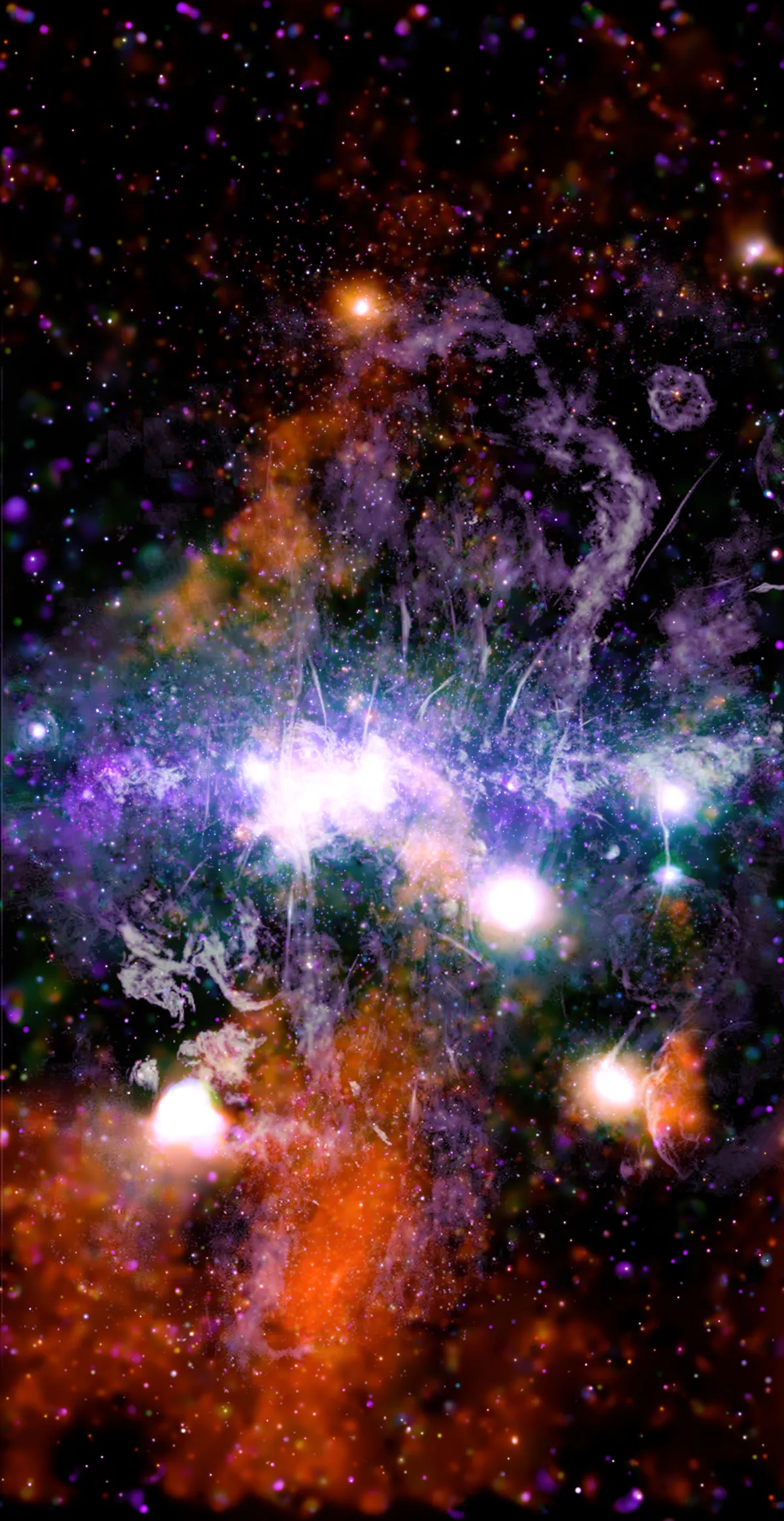NASA has released a new image showing the billions of stars and black holes that make up the centre of our Galaxy.
The image was created using data from almost 400 observations made over the past two decades by the orbiting Chandra X-ray observatory combined with those taken by the MeerKAT telescope in South Africa.
The image shows threads of superheated gas and magnetic fields that stretch out from the centre of the galaxy. The different colours show different X-rays of different energies in orange, green, blue and purple, while the radio data from MeerKAT is shown in lilac and grey.

Read more about the Milky Way:
- How many stars are in the Milky Way?
- If the Universe is expanding, why is the Andromeda galaxy on course to collide with the Milky Way?
- How do we know what the Milky Way looks like?
Astronomer Daniel Wang from the University of Massachusetts suspects that the strips may have formed when magnetic fields aligned in different directions, collided, and became twisted around each other in a process called magnetic reconnection
This is similar to the phenomenon that drives energetic particles away from the Sun and is responsible for the space weather that sometimes affects Earth.
The image shows that the magnetic threads tend to occur at the outer boundaries of the large plumes of hot gas. This suggests that the gas in the plumes is driving magnetic fields that collide to create the threads, Wang says.
It is known that magnetic reconnection events may play a major role in heating the gas existing between stars, also known as the interstellar medium. The process may also be responsible for accelerating particles to produce cosmic rays and creating turbulence in the interstellar medium that triggers new generations of star birth.
Read more about space:
